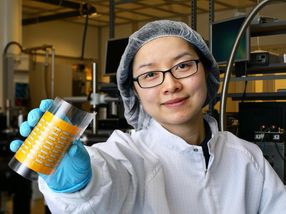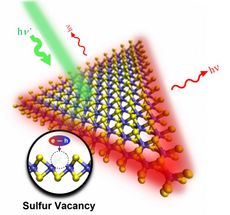How to capture and use atmospheric CO₂
carbon dioxide (CO₂), the main greenhouse gas responsible for global warming, can also be used as a raw material, for example for the production of chemicals, building materials, novel fuels, or even as fertilizer in algae farming, i.e. input for future food production. CO₂ can also be bound to land areas and increase agricultural yields. An overview study now quantifies the potential in this regard up to the year 2050. It was conducted by research institutions in England, the USA, the Netherlands and Germany, among them the Berlin climate research institute MCC (Mercator Institute on Global Commons and Climate Change).
Using research synthesis methods, the authors assessed the relevant scientific literature on the use of atmospheric CO₂, comprising over 11,000 peer-reviewed papers. Based on this information, in combination with the results of an expert survey, utilisation potentials for the year 2050 and breakeven prices were calculated. The global potential for the ten most important CO₂ utilisation options is quite impressive: in the long term, each option would make it possible to bind at least half a gigatonne of atmospheric CO₂ per year. However, the applications are in part mutually limiting – and while CO₂ can remain bound in building materials for centuries, for example, storage is limited to only a few weeks in methanol as a fuel.
“The potential uses of atmospheric CO₂ need to be systematically analysed”, says Jan Minx, one of the authors of the study and head of the MCC working group Applied Sustainability Science. “The potential for most industrial applications may be limited, but CO₂ utilization can provide an important boost on the path to greenhouse gas neutrality. For example, it could accelerate the development of removal technologies through new business models and niche markets. This could also cause the total costs for climate mitigation to drop in the long run.”
However, climate change mitigation through reducing emissions remains as the number one priority. The study puts a widespread misunderstanding to rest with a solid argument: “If we capture one tonne of CO₂ for industrial use at one point, it doesn’t compensate for blowing one tonne into the atmosphere at another point”, emphasises Sabine Fuss, head of the MCC working group Sustainable Resource Management and Global Change and also co-author of the study. “This is because CO₂ utilisation goes hand in hand with considerable energy consumption and therefore additional emissions. It’s important to look at lifecycle emissions and substitution effects more closely and distinguish between different options. Our study makes an important contribution in that regard.”
Professor Cameron Hepburn, Director of Oxford's Smith School of Enterprise and the Environment and lead author of the study, explains: "Greenhouse gas removal is essential to achieve net zero carbon emissions and stabilise the climate because we haven’t reduced our emissions fast enough.” He points out: “Even though CO₂ utilisation could act as an incentive for carbon removal, we do not advocate subsidies for utilization. Rather, carbon pricing as a means of targeting emissions would support CO₂ utilization in cases in which it is beneficial for the climate.”
Original publication
Original publication
Hepburn, C., Adlen, E., Beddington, J., Carter, E., Fuss, S., Mac Dowell, N., Minx, J., Smith, P., Williams, C.; "The technological and economic prospects for CO2 utilisation and removal"; Nature; 2019
Organizations
Other news from the department science

Get the chemical industry in your inbox
By submitting this form you agree that LUMITOS AG will send you the newsletter(s) selected above by email. Your data will not be passed on to third parties. Your data will be stored and processed in accordance with our data protection regulations. LUMITOS may contact you by email for the purpose of advertising or market and opinion surveys. You can revoke your consent at any time without giving reasons to LUMITOS AG, Ernst-Augustin-Str. 2, 12489 Berlin, Germany or by e-mail at revoke@lumitos.com with effect for the future. In addition, each email contains a link to unsubscribe from the corresponding newsletter.



















































